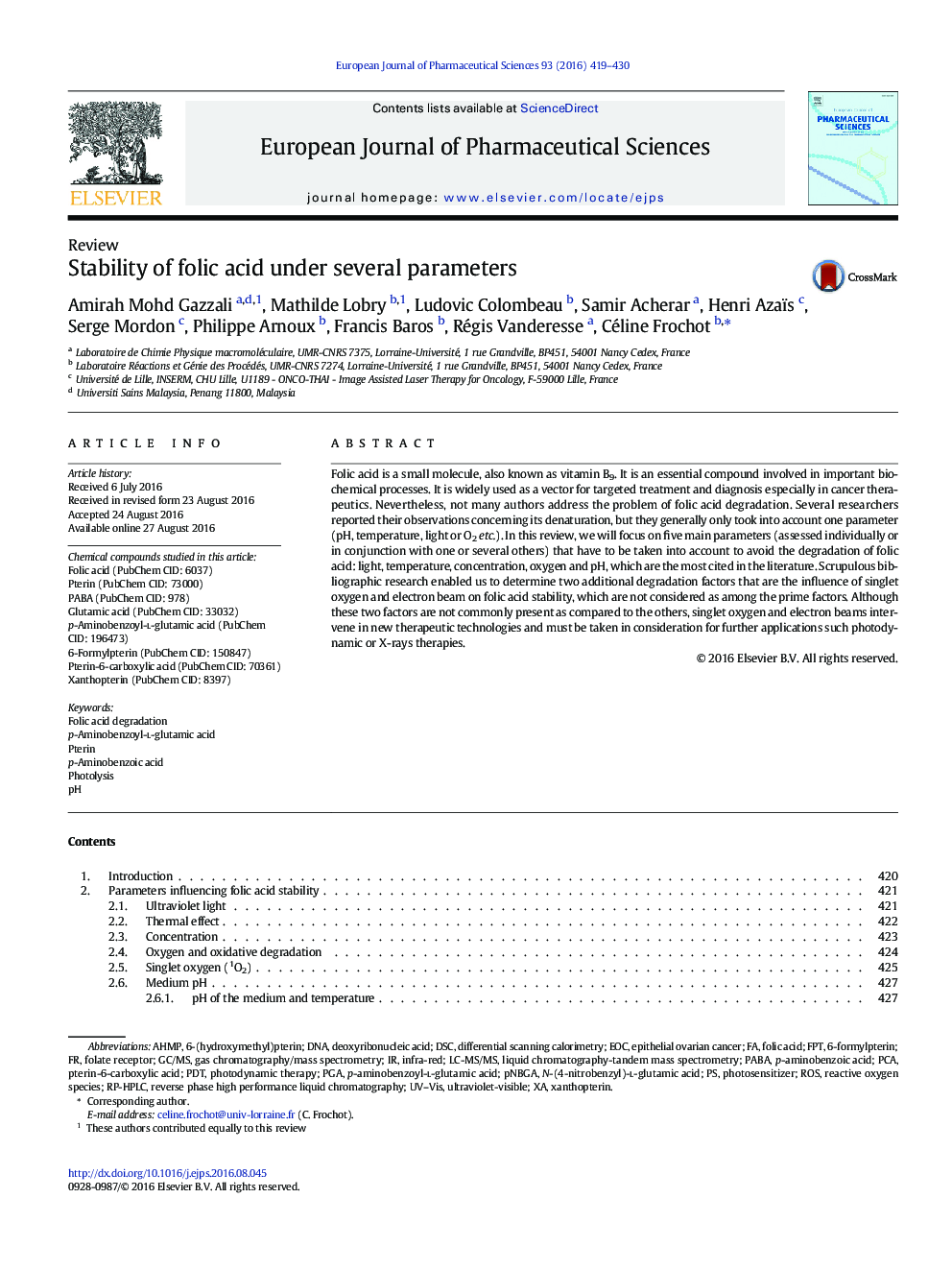| Article ID | Journal | Published Year | Pages | File Type |
|---|---|---|---|---|
| 5809368 | European Journal of Pharmaceutical Sciences | 2016 | 12 Pages |
Folic acid is a small molecule, also known as vitamin B9. It is an essential compound involved in important biochemical processes. It is widely used as a vector for targeted treatment and diagnosis especially in cancer therapeutics. Nevertheless, not many authors address the problem of folic acid degradation. Several researchers reported their observations concerning its denaturation, but they generally only took into account one parameter (pH, temperature, light or O2etc.). In this review, we will focus on five main parameters (assessed individually or in conjunction with one or several others) that have to be taken into account to avoid the degradation of folic acid: light, temperature, concentration, oxygen and pH, which are the most cited in the literature. Scrupulous bibliographic research enabled us to determine two additional degradation factors that are the influence of singlet oxygen and electron beam on folic acid stability, which are not considered as among the prime factors. Although these two factors are not commonly present as compared to the others, singlet oxygen and electron beams intervene in new therapeutic technologies and must be taken in consideration for further applications such photodynamic or X-rays therapies.
Graphical abstractDownload high-res image (43KB)Download full-size image
